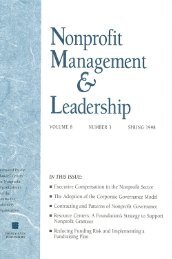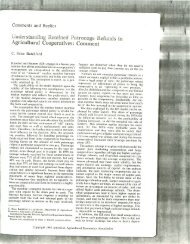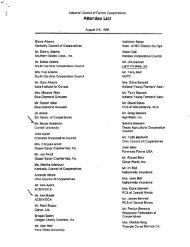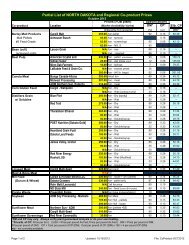Sunflower Production Field Guide - Your "Home Page"
Sunflower Production Field Guide - Your "Home Page"
Sunflower Production Field Guide - Your "Home Page"
You also want an ePaper? Increase the reach of your titles
YUMPU automatically turns print PDFs into web optimized ePapers that Google loves.
22<br />
Sunfl ower plants will compensate for differences in<br />
plant population by adjusting seed and head size. As<br />
plant population decreases, seed and head size will<br />
increase. Oilseed hybrids generally are planted at<br />
higher populations than confection varieties, as the<br />
size of harvested seed is less important. Plant populations<br />
for oilseed sunfl ower should be between 15,000<br />
and 25,000 plants per acre, with adjustments made<br />
for soil type, rainfall potential and yield goal. Lower<br />
populations are recommended for soils with lower<br />
water-holding capacity and if normal rainfall is inconsistent<br />
or inadequate. Confection sunfl ower should<br />
be planted at populations between 14,000 and 20,000<br />
plants per acre. Preharvest dry down is more rapid in<br />
higher plant populations because of the smaller head<br />
size. However, higher plant populations may result in<br />
increased lodging and stalk breakage. Producers who<br />
solid seeded sunfl ower use seeding rates of 18,000 to<br />
23,000 plants per acre.<br />
Proper planting equipment adjustment and operation<br />
is one of the most important management tasks in<br />
sunfl ower production. Plateless and cyclo air planters<br />
have been used effectively to get good seed distribution.<br />
Double-seed drops should be avoided and planter<br />
adjustments should be made. Conventional plate<br />
planters will provide good seed distribution by using<br />
correct planter plates, properly sized seed and proper<br />
seed knockers. Commercial seed companies have plate<br />
recommendations for all seed sizes. Grain drills and<br />
air seeders may be used for seeding, although uniform<br />
depth of planting and seed spacing may be a problem<br />
unless proper adjustments and modifi cations are made.<br />
Postharvest Tillage<br />
After harvest, tillage of sunfl ower stalks is not<br />
recommended because snow-trapping potential is<br />
diminished, thereby reducing soil water conservation<br />
potential during the winter for the following crop.<br />
Also, because of the nature of sunfl ower residues, a<br />
late harvest followed by late fall tillage leaves the soil<br />
extremely susceptible to wind and water erosion.<br />
Table 8. Seed spacing required for various populations, assuming<br />
90 percent germination and 10 percent stand loss.<br />
Plants<br />
Row Spacing<br />
per acre 7.5 12 18 22 28 30 36<br />
- - - - - - - inches between seeds in the row - - - - - - -<br />
12,000 56.5 35.3 23.5 19.2 15.1 14.1 11.8<br />
14,000 48.4 30.2 20.2 16.5 13.0 12.1 10.1<br />
16,000 42.3 26.5 17.6 14.4 11.3 10.6 8.8<br />
17,000 39.8 24.9 16.6 13.6 10.7 10.0 8.3<br />
18,000 37.6 23.5 15.7 12.8 10.1 9.4 7.8<br />
19,000 35.7 22.3 14.9 12.2 9.6 8.9 7.4<br />
20,000 33.9 21.2 14.1 11.5 9.1 8.5 7.1<br />
21,000 32.3 20.2 13.4 11.0 8.6 8.1 6.7<br />
22,000 30.8 19.2 12.8 10.5 8.2 7.7 6.4<br />
23,000 29.5 18.4 12.3 10.0 7.9 7.4 6.1<br />
24,000 28.2 17.6 11.8 9.6 7.6 7.1 5.9<br />
25,000<br />
Feet per<br />
27.1 16.9 11.3 9.2 7.3 6.8 5.6<br />
1/1,000 acre 69.7 43.6 29 23.8 18.7 17.4 14.5<br />
Highlighted seed spacings provide nearly equal-distant spacing between plants for a given row<br />
spacing and plant population.







